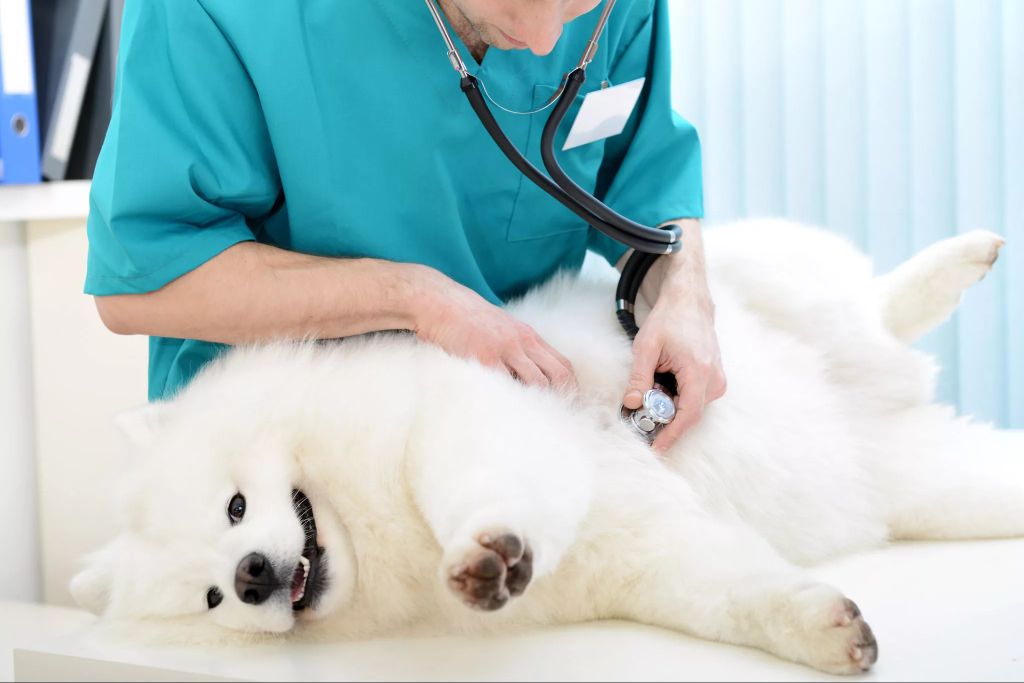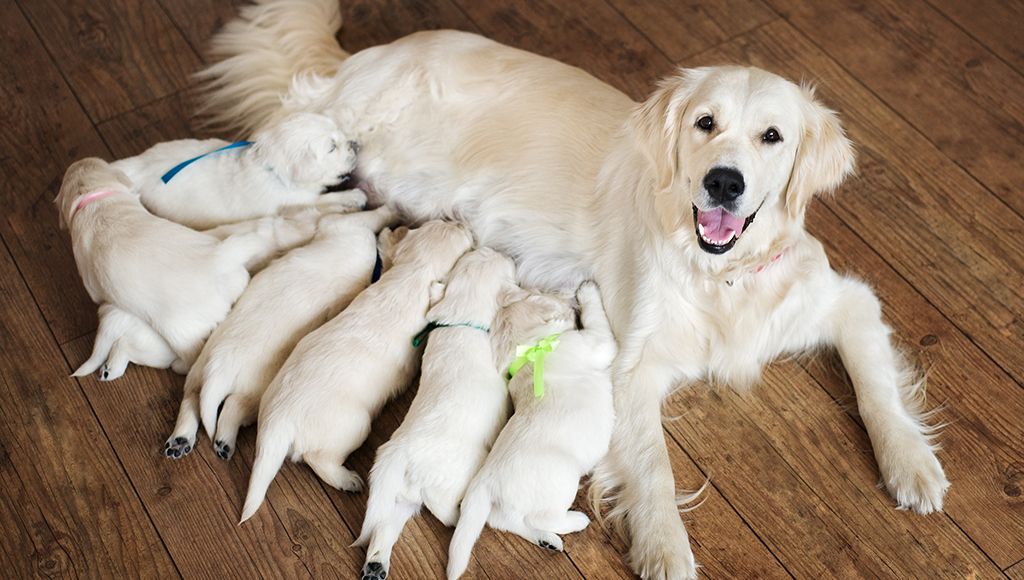Typical Litter Sizes for Dogs
The average litter size for dogs is between 4-6 puppies, though this can vary significantly by breed. According to the American Kennel Club, toy breeds tend to have smaller litters of just 1-3 puppies [1]. This includes breeds like Chihuahuas, Yorkshire Terriers, and Pomeranians. On the other hand, larger dog breeds can have litters of 8 or more puppies. Great Danes, Mastiffs, and Saint Bernards are some examples of large breeds that commonly have litters of 8+ puppies [2]. The number of puppies is influenced by the size of the breed, with smaller dogs having fewer and larger dogs having more.
Factors Affecting Litter Size
There are several key factors that can influence the size of a dog’s first litter, including the dog’s age and health, nutrition and weight, breed size, and genetics.
A dog’s age plays an important role in determining litter size. Generally, dogs between 1-4 years old will have the largest litters. Older female dogs tend to have smaller litters, while dogs younger than 1 year who are still growing themselves often have fewer puppies in their first litter https://www.ovrs.com/blog/litter-size/.

Proper nutrition and maintaining an ideal weight is also important for maximizing litter size. Overweight and underweight dogs tend to have smaller litters. Ensuring the dam is fed a high quality diet and maintaining a healthy weight can help support a larger litter size https://dremmanuelfontaine.com/2023/11/07/the-science-of-canine-litter-size/.
Breed size is another determinant. Larger breed dogs generally have larger litters, while smaller breeds tend to have fewer puppies. Giant breeds often have litters of 8-12 puppies, while toy breeds may only have 1-3 puppies in a litter.
Lastly, genetics plays a role in determining litter size. Some dogs are genetically predisposed to having larger litters. However, all dogs can potentially have smaller first litters compared to subsequent litters.
First Litter vs Later Litters
When a dog gives birth for the first time, there is a common perception that the first litter will be smaller than subsequent litters. However, the evidence on this is inconclusive. Some anecdotal reports indicate that first-time mothers may have smaller litters, with 1-6 puppies being common for a dam’s first pregnancy depending on breed size (https://basepaws.com/dog-insider/how-many-puppies-can-a-dog-have-understanding-dog-litter-sizes). But this is not a definitive rule.
Later litters can potentially be larger due to the mother dog’s physical maturity and experience with whelping and raising puppies. As a dam ages and has more litters, her body becomes accustomed to pregnancy and labor which may enable her to successfully deliver and nurse a larger litter (https://www.akc.org/expert-advice/dog-breeding/average-litter-size/). The number of puppies is also heavily influenced by breed, genetics, nutrition and health of the parents.
While some first-time mothers may have fewer puppies, this is not universally true. Much depends on the individual dog’s reproductive health, breed tendencies, and quality of care during gestation and birth. There are many examples of dams birthing large, healthy first litters. So first litter size cannot be definitively predicted to be smaller than later pregnancies based on available evidence.
Risks of Small First Litters
While most dogs have smaller first litters compared to subsequent litters, an especially small first litter can potentially indicate risks. However, having just one or two puppies (called a singleton or duo litter) does not necessarily mean there are major health issues.
Some potential risks of a very small first litter include:
- May indicate low fertility or reproductive health problems in the dam (mother dog) like uterine infections or mastitis
- Higher likelihood of pregnancy complications and difficult whelping (birthing)
- Puppies may have lower birth weights and growth rates
- Increased risk of developmental issues due to lack of socialization with litter mates
However, many singleton or duo puppies grow up to be happy, healthy adult dogs. Proper care and socialization is important for their development. An especially small first litter does not necessarily mean a dam can’t have larger, healthier litters in the future.
Caring for a Pregnant Dam
Proper care of a pregnant dog is crucial to her health and that of the puppies. Some important aspects of caring for a pregnant dog include:
Proper nutrition and exercise – According to the AKC, pregnant dogs should be fed 25-50% more food starting at week 6 or 7 of pregnancy. High quality protein sources like chicken, fish, eggs and lean red meats are ideal. Moderate exercise is also recommended, but strenuous activity should be avoided later in pregnancy.
Providing a whelping area – A few weeks before her due date, set up a quiet, warm area with plenty of clean bedding where she can give birth comfortably. The area should be in a low-traffic area of the home.
Signs of labor – Look for restlessness, nesting behavior, loss of appetite and discharge from the vulva as signs that labor will begin within 24 hours (Michigan Animal Hospital).
Knowing when to intervene – Most dogs whelp naturally without issues, but know when to call your vet, such as if labor stops progressing, the puppy is stuck, or there are other complications.
Whelping and Raising a Litter

The whelping process can be challenging for first-time dog breeders. Proper preparation and care is crucial for the health of the mother and puppies. Some key steps for whelping and raising a litter include:
Preparing supplies like a whelping box, heating pad, and medical supplies. The whelping area should be around 85°F to keep newborn puppies warm.
Conducting health checks on each puppy at birth, clearing airways, weighing them, and keeping records. Watch for signs of distress like difficulty breathing or weakness.
Ensuring proper fostering and socialization in the first weeks. Puppies should nurse frequently and interact with humans to be well-adjusted.
Weaning puppies off milk around 3-4 weeks old. Provide puppy food soaked in milk to transition them to solid foods.
Consulting veterinarians for guidance throughout whelping and raising the litter. Their expertise helps optimize care for the dam and puppies.
When to Breed Again After First Litter
It is generally recommended to wait at least 1-2 heat cycles before breeding a dam again after her first litter. This allows the dam’s body to fully recover from pregnancy and nursing before going through it again. Most experts advise waiting at least 6-12 months between litters.
According to the AKC, it is best to wait until a dam’s second heat cycle after weaning her puppies before breeding again. This allows her body to return to normal conditions. The AKC also recommends not registering litters from dams bred again before 8 months after the previous litter, except with special documentation.
Breeding too soon, also known as “back-to-back breeding,” increases health risks for the dam and puppies. Dams need time to physically and mentally recover between litters. Back-to-back breeding can deplete the dam’s nutrient reserves and lead to exhaustion. It may also increase risk of mastitis, metritis, small litters, and weak puppies.
The decision of when to breed again after a first litter should consider the individual dam’s health, recovery time, maturity level, and heat cycles. While some dams may tolerate back-to-back breeding, it is generally better for their long-term well-being to allow at least 6-12 months between litters whenever possible. This supports both the dam’s health and optimal litter outcomes over multiple breeding cycles. Responsible breeders prioritize dam health over breeding frequency.
Sources:
https://www.midwoofery.com/post/back-to-back-breeding
Ethical Breeding Practices
Responsible and ethical dog breeders ensure they follow guidelines for health and welfare of the dogs in their care, as well as their puppies and buyers. This includes:
– Health testing of sire and dam – Any reputable breeder will do health testing relevant to their breed, such as hip scores, elbow scores, eye exams, and DNA tests. This helps reduce the chances of inherited diseases and conditions (1).
– Following breed club rules – Ethical breeders adhere to their breed club’s code of ethics, rules around age of breeding, frequency of litters, etc. These rules aim to protect dam and puppy health (2).
– Screening buyers – Responsible breeders vet potential buyers to ensure the puppies are going to good homes prepared for a dog. This includes home visits and interviewing buyers about experience with dogs (3).
– Lifelong commitment to dogs bred – An ethical breeder will take back or assist with rehoming any dog they produced, for life. This reduces the chances of their dogs ending up abandoned or in shelters (1).
Following these practices helps ensure dogs produced are physically and mentally healthy, and that they go to dedicated homes. This improves animal welfare and reduces irresponsible breeding (3).
Alternatives to Breeding
There are many ethical alternatives to breeding dogs that help address pet overpopulation and support animal welfare:

Adopt Don’t Shop – Consider adopting from a shelter or rescue organization rather than purchasing from a breeder or pet store. There are millions of loving dogs waiting for homes in shelters. Adopting gives them a second chance. Learn more at Why Adopt a Shelter Pet.
Foster Dogs – Become a foster parent for a local rescue group. Fostering provides temporary care while helping socialize and prepare dogs for adoption. It’s a rewarding way to help without a long-term commitment. Get started at How to Become a Dog Foster Parent.
Support Rescues – Donate, volunteer, or spread awareness for nonprofit rescues working to save homeless pets. Many operate through community support and are always seeking help. Locate groups near you at Petfinder Shelter and Rescue Directory.
Spay/Neuter – Sterilizing dogs is a safe, effective way to curb overpopulation. Most shelters spay/neuter animals before adoption. Pet owners should also consider this responsible option. Learn about the benefits at ASPCA – Spay/Neuter.
Summary
When it comes to litter sizes in dogs, there are many factors that come into play. While some believe a dog’s first litter will be the smallest, this is not always the case. The number of puppies in a litter is affected by the breed, age, and health of the mother dog, as well as genetics and nutrition.
In recap, key points to remember are that a dog’s first litter is not necessarily the smallest, and the most important considerations are the health and responsible breeding practices. Proper prenatal care, whelping preparations, and raising the litter in a safe environment should be the top priorities for any breeder. It’s also essential to allow the mother dog ample time to recover before breeding again.
Rather than focusing on litter size alone, reputable breeders concentrate on breeding healthy, well-socialized puppies and matching them to suitable homes. They make ethical choices and prioritize canine health and wellbeing over profits or producing excessive numbers of puppies. While not every dog’s first litter will be the smallest, following responsible practices helps set up both the mother and offspring for success.

